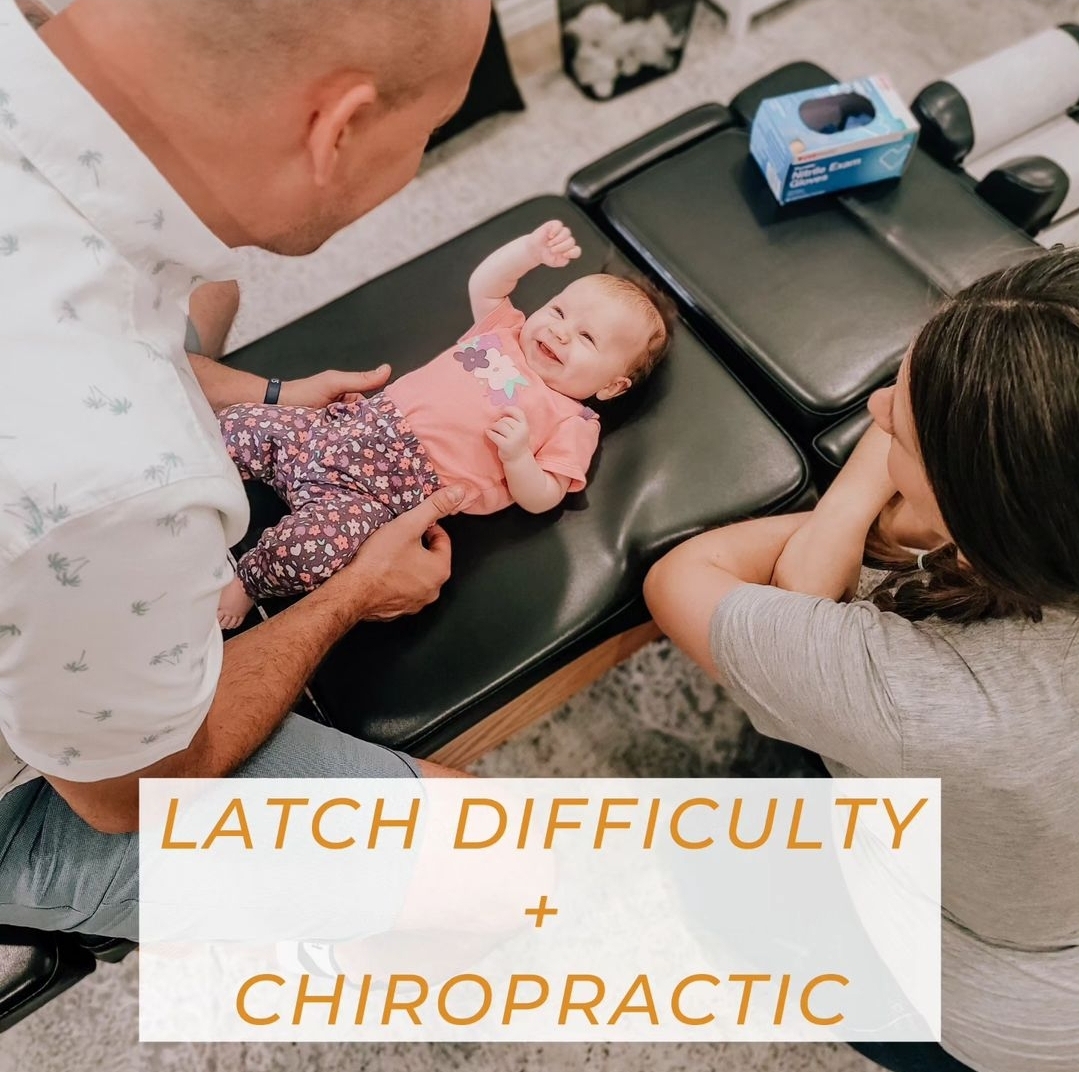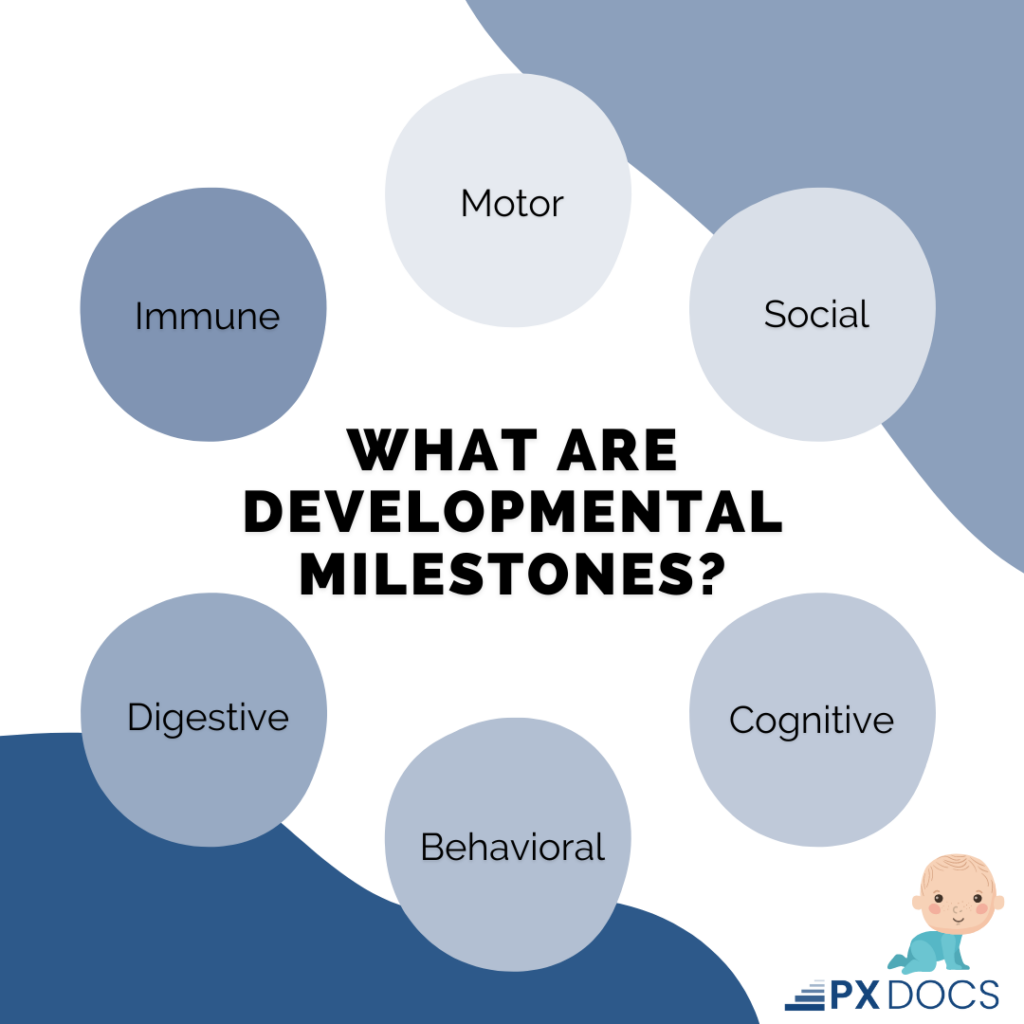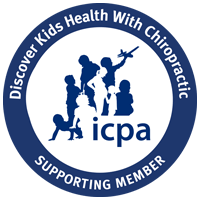
WHAT ARE DEVELOPMENTAL MILESTONES?
Developmental milestones are significant physical and behavioral signs or markers of optimal development in infants and young children. Things like holding their head up, tummy time, sitting up, rolling over, crawling, walking, and talking provide important information about how your child’s development is progressing.
Additionally, it’s important to focus not just on the motor aspect of development but also on how key systems such as sleep, digestion, and immune function are progressing. These ‘internal’ aspects of development are so often overlooked and dismissed as something separate and distinct by your average pediatrician but really do hold the missing clues to why so many kids struggle with developmental delays in the first place.
This article will be the first of its kind to really explore the link between those internal and external elements of development and how they are linked together through what’s called the central or autonomic nervous system.
This simple sketch below will help you see how these are linked together visually in overall infant and child development.
DEVELOPMENTAL MILESTONES BY CATEGORY OR SYSTEM

We have always found it helpful for parents to learn about developmental milestones not just in various stages but also separated by the different categories or systems of development.
- Motor – this includes the classic list of head and neck control, tummy time, rolling over, sitting up, crawling, standing, walking, running, jumping, etc.
- Social – making eye contact, smiling, laughing, engaging, interacting, initiating play, etc.
- Cognitive – thinking, reasoning, problem-solving, understanding, decision-making, etc.
- Behavioral + Emotional – learning, calming, self-regulation, patience, listening, following directions, etc.
- Digestive – latching, swallowing, breastfeeding, motility, pooping, etc.
- Immune – fever, coughing, clearing congestion, recovering quickly from illnesses, handling teething and seasonal changes, etc.
And really, in a category all by itself for developmental importance is sleeping. An infant and young child’s development is tied to sleep and rest perhaps more than anything else.
Putting it all together, this is why we strongly recognize that things that a traditional pediatrician will dismiss as ‘normal’ and no big deal, such as colic, reflux, and constipation, are serious issues that children do not ‘grow out of it’ but instead often ‘grow into’ developmental delays and things like sensory integration disorders.
While the sketch and image below are not going to impress you with my artistic drawing skills, it will help you see how simple we can make developmental milestones when we break things down into these three (3) main parts or phases – Basics, Motor, and Advanced!
DEVELOPMENTAL MILESTONES BY AGE
Each child develops at their own pace, but we can use these developmental age markers to help find out when things are really getting off track, or trouble may be brewing.
We’ll keep our list of things to watch for a bit more simple and straightforward than the average list, but if you want a more detailed breakdown, we really like this site here.
Things we watch the closest for are:
1 month:
- Struggles to turn their head side to side, latch, swallow, digest, and nurse
- Favors just one side with their head and neck, frequently appearing “stuck” in one direction over the other, or has a flat spot on their head that remains
- Frequently stiffens their head and neck, arches back, and cries
- Is not pooping easily many times per day
3 months:
- Still struggles to eat, move their head and neck side to side, arch, and cry, etc.
- Handles tummy time well, pushing up and raising their head and neck comfortably
- Smiles, interacts, begins to babble and imitate sounds
- Starts using hand and eyes in coordination and with some intent
- Struggles to poop daily and/or gets frequently congested
From there on out, there is so much range in a child’s development and so much that needs to be happening that literally millions of brain cells and neurons develop each week rapidly, and your 1-year-old infant’s brain will be 64% or larger than it was at birth!
Therefore let’s just circle back to the more ‘big picture’ signs to watch for when it comes to developmental milestones and focus on that list one more time. Anything you see on this list below would be a strong sign that getting your child checked by a trained Pediatric Chiropractor specializing in neurodevelopment would be a good idea (more on that later)!
- Frequently stiffens, arches, cranks head, and neck, bangs their head and cries
- Can’t stand tummy time, can’t sit or stand on their own by 12 months or so
- Skips crawling altogether or goes through it very quickly to standing in a stiff and tense manner
- Struggles consistently with sleep, digestion, and immune function
- Spends far more time crying and looking distressed than making eye contact, smiling, interacting, babbling, imitating sounds, engaging, etc.
Lastly, we know that most doctor’s offices and official websites go into great detail on these milestones and markers. But so often, the more detailed and granular a doctor gets, the more they tend to miss the ‘big picture’ of things like sleep, digestion, and immune function in addition to motor and social development.
And while traditional doctors often don’t really listen intently to those mom and dad ‘gut instinct’ concerns, our PX Docs certainly do. As parents, you are with your developing child 24/7 and share that innate bond and connection with them. So if you have concerns about your infant’s health and development that aren’t being heard and taken seriously by your pediatrician, get them checked by a caring, compassionate pediatric chiropractor right away.
WHAT CAUSES KIDS TO MISS DEVELOPMENTAL MILESTONES?
Really the conversation about causes of developmental delays here needs to be taken in two parts. The first part describes what a subluxation is and how it’s so often involved in delaying and altering optimal neurodevelopment. And second, it’s important to discuss what causes the subluxation and resultant dysautonomia in the first place.
Even though these are pretty intricate neurological conditions and discussions, like always here on PXDocs.com, we want to keep the explanations simple, and simply put, subluxation means stuck.
Subluxation has two (2) parts to it that parents need to know about:
- Altered Tone + Tension (too much and/or too little)
- Incoordination + Imbalance
Because each subluxation component involves the NeuroMotor and NeuroSpinal Systems, it’s very much a player in developmental milestones since gross + fine motor functions are so intertwined into this conversation.
When a child is subluxated, the first response of the nervous system is to move into what’s called an excessive sympathetic state (dysautonomia). This leads to many of the muscles, especially those of the head, neck, and upper torso, being extremely tight, tense, and excessively wound up.
This looks like the challenges with latching, nursing, sleeping, colic, and reflux in a newborn infant. And since subluxation tends to first set up shop in the neck and upper back, and torso, it immediately alters developmental milestones as early as the first month of life.
So what the heck caused the subluxation and increased tension in the first place? The most common case history findings I’ve seen in clinical practice for 15 years running now are the following three (3) things:
- Significant amounts of stress and emotional challenges for the mother during pregnancy (maternal distress)
- Breech positioning, cord-wrapped, and altered birth presentations
- Birth interventions such as C-sections, manual assistance, forceps, vacuum, and induction
Each of those physical stressors significantly impacts the developing infant’s head, neck, and upper torso nerves and muscles and creates the subluxation process. Put simply, birth trauma is a big deal and, in my opinion, the most overlooked aspect of developmental delays and neurodevelopmental challenges in children as a whole.
HAVE THEY MOVED THE GOALPOSTS?
Early in 2022, the CDC made some significant changes to the Motor Milestones chart that has rightfully upset a lot of pediatric neurodevelopmental experts and practitioners. While I covered it extensively in this blog post, this is going to lead to many more parents and children missing out on some critical signs of things being off track developmentally and neurologically.
It seems to be another chapter of the “don’t worry, they’ll grow out of it” line of thinking that has unfortunately prevailed in pediatrician’s offices for far too long. We’ve seen dramatic rises in chronic childhood neurological challenges such as autism, ADHD, Sensory Integration Disorder, Anxiety, and more… and we can’t just sit by and hope things get better.
Parents need and deserve a different approach, and that starts with a different perspective. They need doctors and practitioners who are going to dive deep and get to the root cause, check these kids for subluxation, dysautonomia, and developmental delays early and often… and overall, not rely on “watch and wait” or another medication to do the job.
HOW CAN PEDIATRIC CHIROPRACTIC CARE HELP?
We’ll keep it simple once again. It starts with discovering if your child is subluxated, and if so… to what degree and where precisely within their motor system is that altered tension and incoordination.
Dr. James will do an in-depth case history and examination with neurological and neuromotor testing called The INSiGHT Scans. These incredible scans take only minutes, are entirely safe and non-invasive, and help find exactly where those subluxations and areas of altered tone and tension are.
Many parents may already have had a pediatric PT, OT, Speech, and Developmental Motor Assessment done for their child. While those evaluations and therapies are fantastic and do so much good for developmentally delayed children… the INSiGHT Scans and the 5-Step PX Docs Clinical Process dive even deeper and look even further into the function of the neuromotor system.
But please know this parents – kids are meant to be healthy, meet their milestones, and grow up to be strong, resilient, healthy, and happy! If you’ve got concerns with your child’s developmental milestones that you’d like checked by a trained PX DOC such as Dr. James Peterson.
Dr. Tony Ebel and Dr. James Peterson


